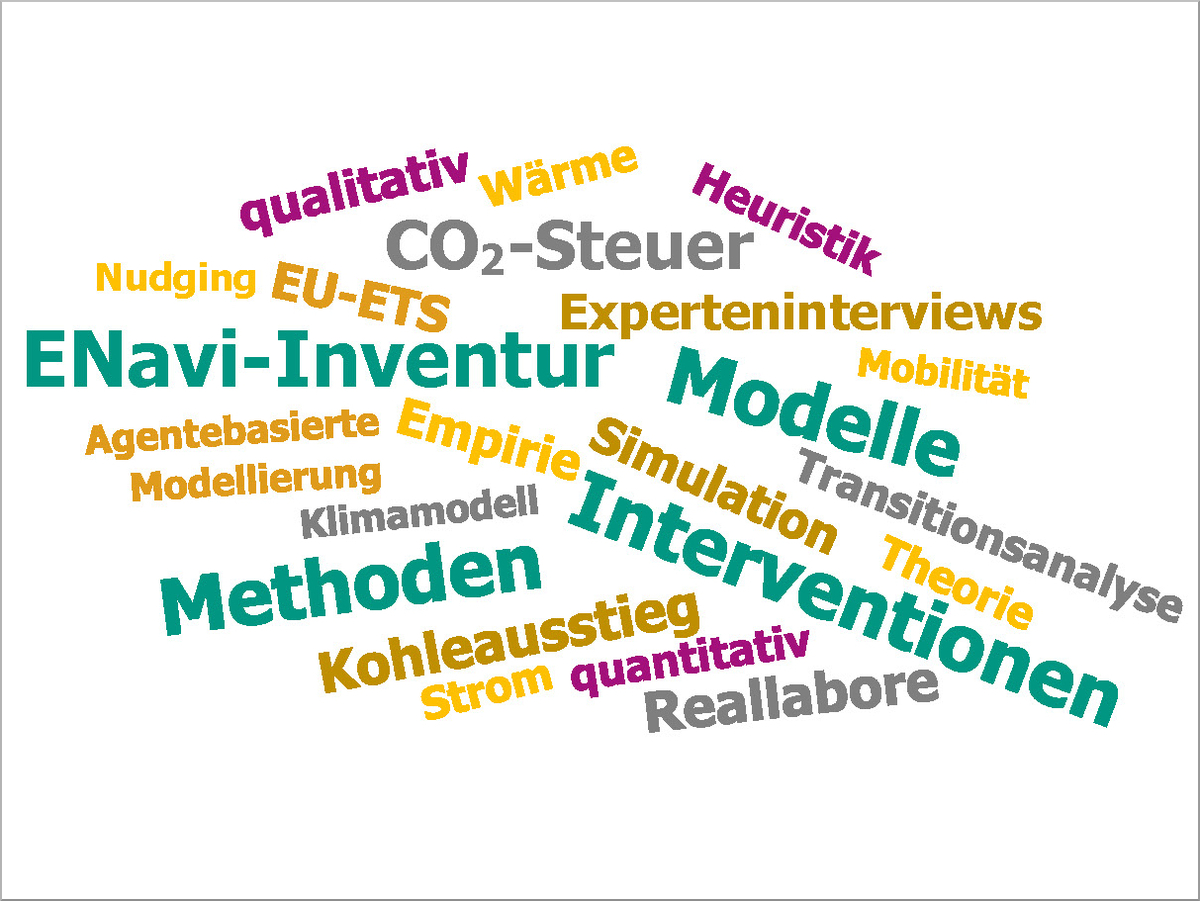Guidance for the energy transition
The energy system with its electricity, heat, and mobility sectors is complex, highly networked, and dynamic. For a successful energy transition, it is therefore important to be able to estimate potential developments as well as direct and indirect consequences of interventions as precisely as possible in advance. Only in this way can a socially acceptable, ecologically sustainable, and technically advanced and secure transformation take place which is politically legitimate and economically efficient.
This is where the integrated impact assessment of the ENavi Kopernikus project comes in. The project aims to generate important orientation knowledge for shaping the energy transition. Its roadsmap and navigation approach integrates disciplinary and social knowledge in order to demonstrate plausible development paths of the energy system and to simulate and estimate the effects of political decisions.
Inventory of ENavi models, methods, and interventions
The ENavi process involves more than 80 institutions in 195 subprojects. Flexibly combining their diverse expertise is a key strength of the project. ITAS and its project partners have now systematically recorded the consortium’s entire content and methodological expertise. The database not only includes information on quantitative and qualitative models and methods, but also on the interventions in the energy system analyzed in the project, for example, through state control or the actions of decentralized actors.
The inventory helps bundling competencies and structuring the complex ENavi process. Depending on the research question in the key topics of electricity, heat, and mobility, researchers can now network various qualitative and quantitative methods in the best possible way. This is necessary to address social, economic, and health consequences as well as legal, political, and technical implications and prerequisites for transformation, for example, in the areas of fossil fuel phase-out or decarbonization of the transport system.
Short report and profiles
The inventory includes a short report and a total of 90 profiles of models, methods, and interventions, which are now available for download.
In addition to ITAS, the Institute of Energy Economics and Rational Energy Use (IER), the German Aerospace Center (DLR), the Helmholtz Centre for Environmental Research (UFZ), and the Center for Interdisciplinary Risk and Innovation Studies (ZIRIUS) were involved in creating the inventory. (24.09.2018)
Further information:
- ENavi website of the BMBF


